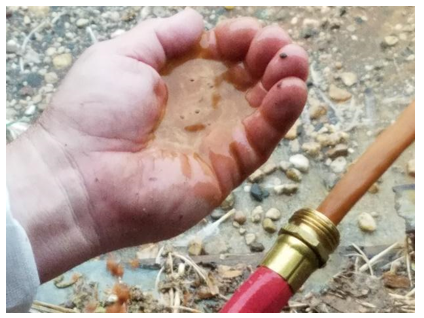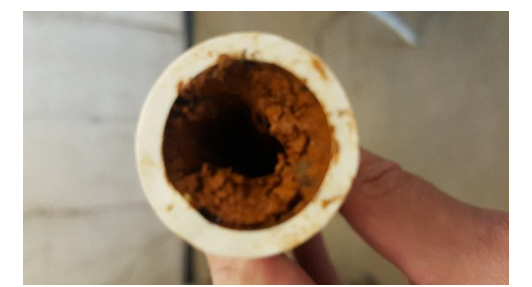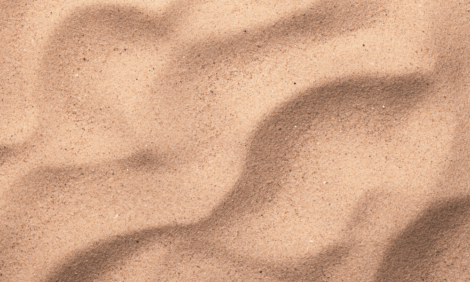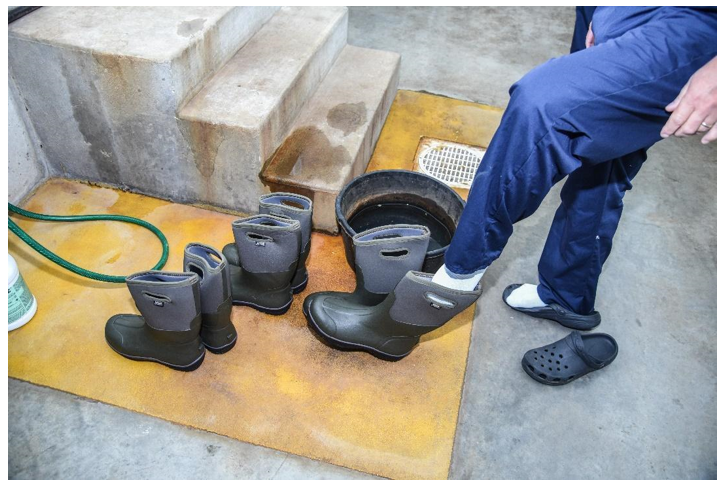



Cleaning and disinfection pt. 2: Drinker lines
Part of Series:
< Previous Article in Series Next Article in Series >
The importance of supplying clean and fresh water to flocks cannot be overemphasized. Water is the most important nutrient. After establishing the chemical and microbiological quality as well as the temperature of the water supply, it is important to ensure that these qualities are preserved. The house environment is conducive to the growth of bacteria, which, in turn, is potentially harmful to the health of the flock. Therefore, it is critical to have an established program of regular cleaning and disinfection of drinkers that should be designed to prevent or remove organic material and biofilm from inside the drinker lines.
A biofilm is a collection of microorganisms that stick to each other and to surfaces. At first, bacteria in an aqueous solution may attach themselves to a surface, such as inside drinker lines. The bacteria then will start producing a matrix of extracellular polymeric substances (EPS) composed of sticky proteins and sugars that entrap other bacteria, DNA, and other organic matter. This matrix will grow as other bacteria and material are trapped. This EPS then provides the bacteria with a stable environment and protection from some stressors. Biofilms can create multiple issues including harboring pathogenic bacteria, like E.coli and Salmonella, and blocking water flow through the drinker lines and blocking nipples, negatively impacting water intake (and therefore feed intake and growth).

The best chemical to remove biofilms is hydrogen peroxide. However, biofilms will start to develop again after a few days of treatment, so hydrogen peroxide should be used on a weekly schedule. There are many hydrogen peroxide-based products on the market, and those with silver nitrates are the most stable. If the water source is hard (high concentrations of calcium and magnesium ions), it is better to use a hydrogen peroxide product combined with peracetic acid, which will also remove scale.
Another popular product used to disinfect drinking water is chlorine, which works well on most bacteria or viruses, but its efficacy is dependent on the pH of the water. If the pH is higher than 7, chlorine will be present mostly in the form of hypochlorite ions, which are not an effective disinfectant. When the pH is below 7, most of the free chlorine will be hypochlorous acid, which is much more effective in killing microorganisms. Note: Never mix chlorine and acids because chlorine gas can be created, which is toxic to humans and animals. Always acidify the water before adding chlorine or install two different injectors.

Nipples on drinker lines should be checked prior to placement to ensure none are blocked, which will decrease water and feed intake.
A practical way to measure the efficacy of chlorine as a disinfectant is by measuring the oxidation-reduction potential (ORP) of the water. High values indicate that chlorine will work well as a disinfectant. Low (or even negative) levels will indicate a heavy organic load, which most likely will overwhelm the disinfectant capacity of chlorine. The aim is to have an ORP level of 650 millivolts or higher.
After administering a cleaning product, always flush the lines to remove any detached biofilms. All cleaning and disinfection programs of drinker lines should include flushing, which will help keep the water clean and have a positive impact on water temperature and flock water intake. Flushing should be done at least 3 times a week with a pressure of 2 bars for 2 seconds for each meter of length of the lines. For example, for a drinker line is 60 meters, flushing should last at least 2 minutes. During brooding, in the first week when water consumption is low, flushing must be done at least daily (but can be 2 to 3 times a day). With decreased water consumption and high brooding temperatures, biofilms can easily form in water lines. Therefore, frequent flushing during brooding will keep the water temperature from getting too high and prevent biofilms from forming.

Implementing a good cleaning and disinfection program during flock production is not enough without an equally good program between flocks. Between flocks, drain the system and prepare a cleaning/disinfecting solution based on the total capacity of the system and according to the manufacturer’s instructions. Fill the system with the solution and allow it to circulate for improved efficacy. If circulation is not possible, let it stand according to the product recommendations (normally 24 hours for most products, but some may require less time). After treatment, drain the system and flush it to completely remove any biofilms and cleaning solution residues. Before a new flock arrives, activate nipples to ensure that no biofilm or scale residues are blocking them.
One cleaning and disinfection program will not work for all producers as each producer has unique water characteristics, production environments, and equipment. To determine which products will work for you, test your water. Furthermore, test your water at least twice a year to ensure the same treatment will continue to be effective. Testing will also provide data, such as microbiological load, pH, hardness, and mineral content, that will help you choose the right products and management techniques to achieve the best results.
Clean drinking water is foundational to achieve the full genetic potential of the flock. To ensure the health and well-being of your flock, it is also vital to implement an effective cleaning and disinfection program.










